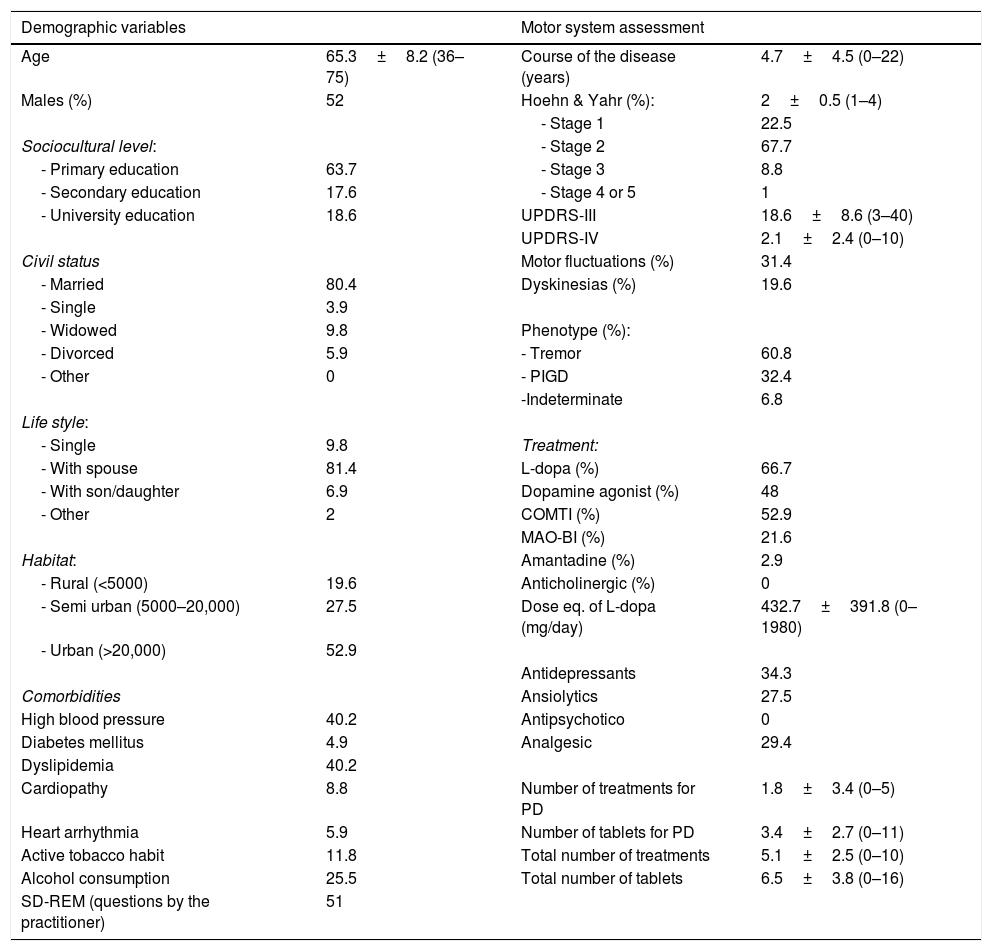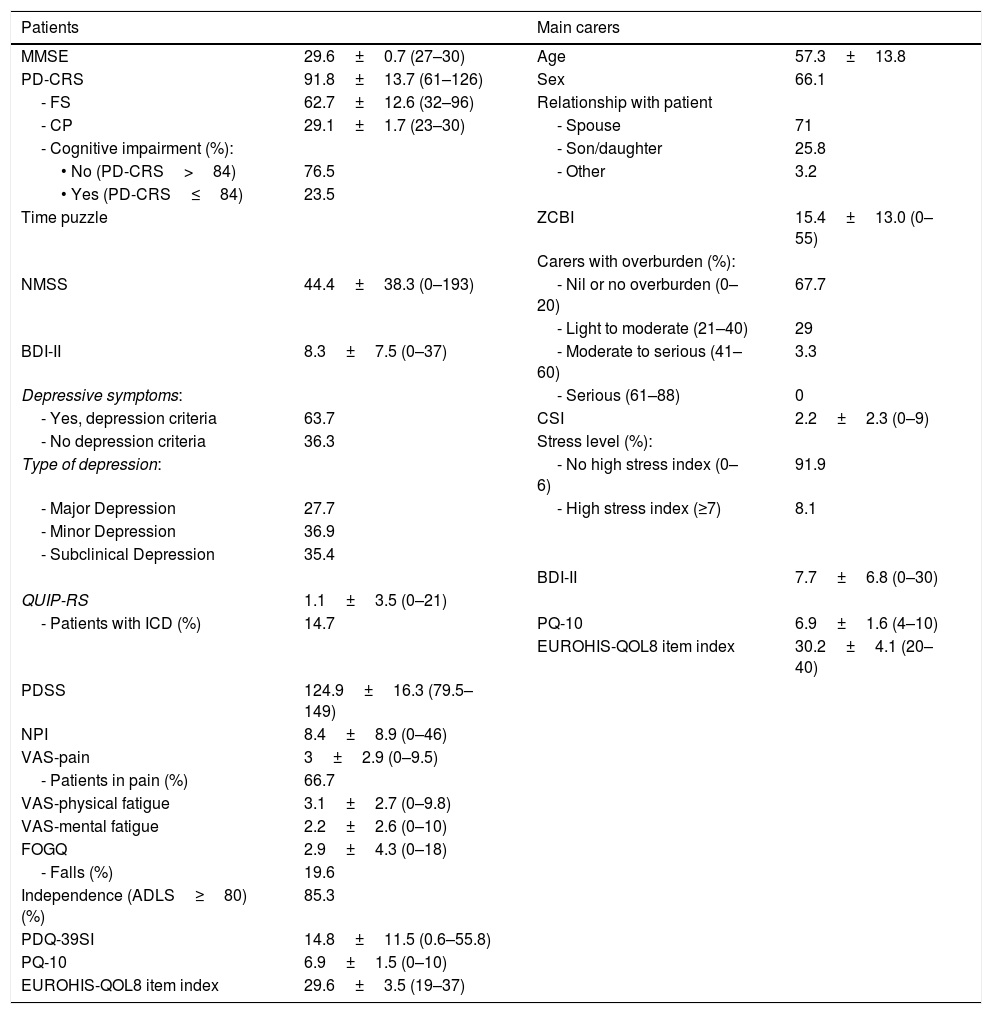The evaluation of patients with Parkinson's disease (PD) is complex and the detection of non-motor symptoms by the neurologist a very important aspect. However, it takes time and is not easy in daily clinical practice. As an alternative, a trained nurse can perform this evaluation.
ObjectiveTo describe the non-motor evaluation of the patients from the Cohort of Patients with Parkinson's Disease in Spain, 2015 study (COPPADIS-2015) conducted by movement disorder specialist nurse from our centre.
MethodsPatients and caregivers from the COPPADIS-2015 study were included. The assessment included: (1) cognition (PD-CRS and puzzle test); (2) non motor symptoms as a whole (NMSS); (3) mood (BDI-II); (4) sleep (PDSS); (5) neuropsychiatric symptoms (NPI, QUIP-RS); (6) pain and fatigue (VAS); 7) gait problems (FOGQ); 8) disability (ADLS); 9) quality of life (PDQ-39SI, PQ-10, WHOQL-8); (10) caregiver status (ZCBI, CSI, BDI-II, PQ-10, WHOQL-8).
Results102 patients (65.3±8.2 y; 52% males) and 62 caregivers were evaluated between January 2016, and October, 2017. Mean time of non-motor evaluation was 73.7±20.5min. Twenty-three point five percent of the patients had cognitive impairment, 17.6% major depression, 14.7% impulse control disorder, and 66.7% pain.
ConclusionsThe non-motor assessment of patients with PD takes a long time but is very valuable given that it provides a great deal of information about the patient's condition and can be done by trained nurses.
La evaluación de los pacientes con enfermedad de Parkinson (EP) es compleja siendo fundamental para el neurólogo detectar diferentes síntomas no motores. Sin embargo, lleva tiempo y no es fácil en la práctica diaria. Como alternativa, una enfermera entrenada puede realizar dicha evaluación.
ObjetivosDescribir la evaluación no motora llevada a cabo por la enfermera especialista en trastornos del movimiento dentro del proyecto de investigación Cohort of Patients with Parkinson's DIsease in Spain, 2015 (COPPADIS-2015) en nuestro centro (CHUF).
MétodosSe incluyeron pacientes con EP así como cuidadores principales que cumplieran con los criterios de participación del estudio COPPADIS-2015. La evaluación llevada a cabo por la enfermera incluía: 1) cognición (PD-CRS y test del puzle); 2) SNM en general (NMSS); 3) estado de ánimo (BDI-II); 4) sueño (PDSS); 5) síntomas neuropsiquiátricos (NPI, QUIP-RS); 6) dolor y fatiga (VAS-Pain y VAS-Fatigue); 7) alteraciones de la marcha (FOGQ); 8) autonomía (ADLS); 9) calidad de vida (PDQ-39SI, PQ-10, WHOQL-8); 10) estado del cuidador (ZCBI, CSI, BDI-II, PQ-10, WHOQL-8).
ResultadosUn total de 102 pacientes (65,3±8,2 años; 52% varones) con EP y 62 cuidadores fueron evaluados entre enero de 2016 y octubre de 2017. El tiempo medio de evaluación fue de 73,7±20,5 min. El 23,5% de los pacientes presentaba deterioro cognitivo, 17,6% depresión mayor, 14,7% trastorno de control de impulsos y 66,7% dolor.
ConclusionesLa evaluación no motora de los pacientes con EP consume tiempo pero es muy valiosa dado que proporciona gran información del estado del paciente y puede ser llevada a cabo por personal de enfermería entrenado.
Article
Diríjase al área privada de socios de la web de la SEDENE, (https://sedene.com/revista-de-sedene/ ) y autentifíquese.











